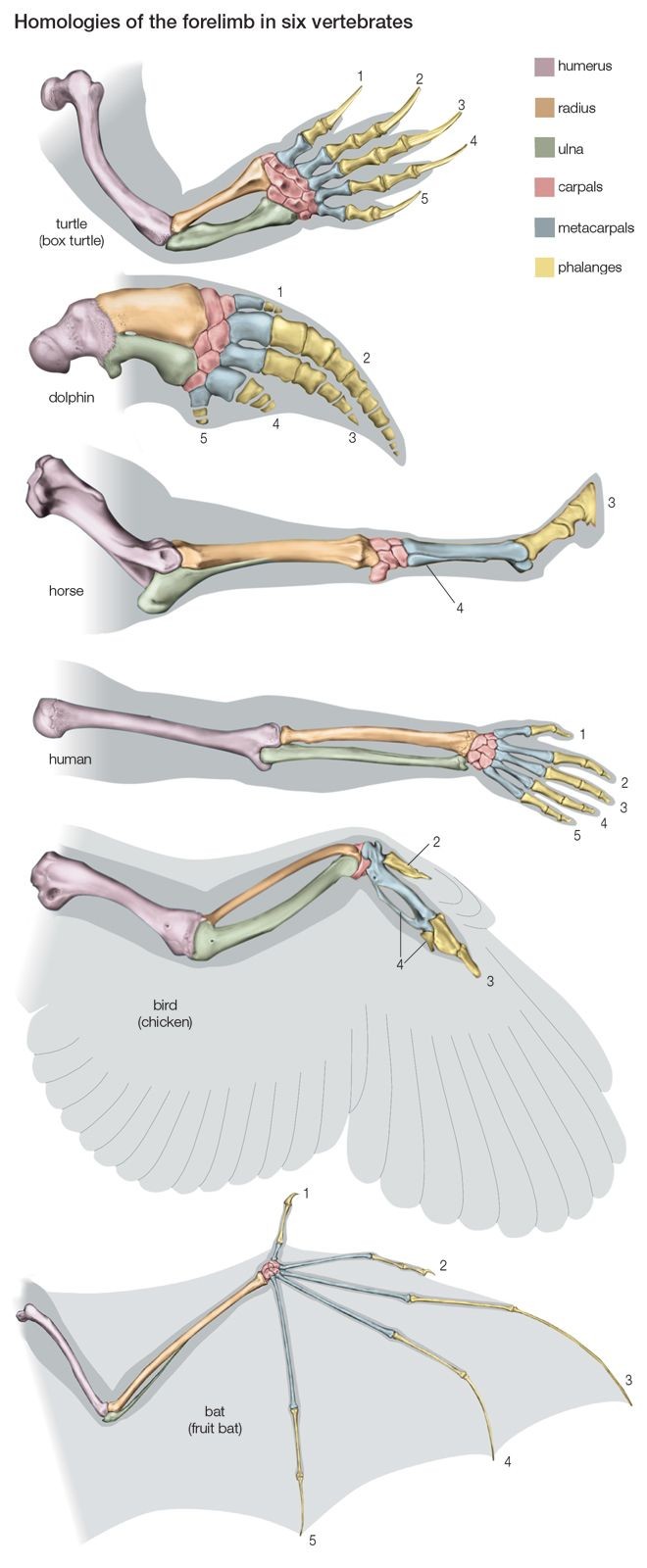Comparative anatomy is the study of similarities and differences in the anatomy of different species. It plays a crucial role in evolutionary biology, providing evidence for common ancestry and the processes of adaptation. By comparing the anatomical structures across species, we can trace evolutionary relationships and understand how different organisms have adapted to their environments. This field, examining everything from microscopic cell structures to macroscopic organ systems, reveals the fascinating story of life’s evolution on Earth.
One of the most compelling aspects of comparative anatomy is the concept of homologous structures. These are structures in different species that share a common evolutionary origin, even if they have different functions in the adult organisms. Homology is a cornerstone of evolutionary biology, demonstrating how diverse species can evolve from a shared ancestor. Classic Comparative Anatomy Examples of homology are readily observed in vertebrate limbs.
Homologous Structures: Evidence of Shared Ancestry
The forelimbs of vertebrates provide a striking example of homologous structures. Consider the seemingly disparate limbs of humans, birds, bats, crocodiles, dolphins, and rodents. At first glance, a human arm, a bird’s wing, a bat’s wing, a crocodile’s leg, a dolphin’s flipper, and a rodent’s paw appear to have little in common, reflecting their diverse functions – grasping, flying, swimming, and running.
 Homologies of vertebrate forelimbs showcasing bone structure similarities across species
Homologies of vertebrate forelimbs showcasing bone structure similarities across species
However, a detailed examination of their skeletal structure reveals a remarkable similarity. Beneath the surface, these limbs share the same fundamental bone arrangement: a humerus, radius and ulna, carpals, metacarpals, and phalanges. This underlying similarity, despite the modifications for different functions, points to a shared ancestry. These vertebrates inherited this basic limb structure from a common ancestor, likely an ancient fish, and over millions of years of evolution, natural selection has modified these structures to suit different lifestyles. For instance, the bones in a bird’s wing are elongated and lightweight for flight, while in a dolphin’s flipper, they are shortened and flattened for swimming. Even though the outward appearance and function differ dramatically, the homologous bone structure clearly indicates their common evolutionary origin.
Analogous Structures: Convergent Evolution in Action
In contrast to homologous structures, analogous structures are features in different species that have similar functions but have evolved independently and do not share a recent common ancestry. Analogy arises from convergent evolution, where unrelated species independently evolve similar traits because they face similar environmental pressures or lifestyles.
A classic example of analogous structures are the wings of insects and birds. Both insect wings and bird wings serve the crucial function of flight, enabling these organisms to move through the air. However, their structural composition and evolutionary origins are entirely different. Bird wings are vertebrate forelimbs, with a bony skeleton covered in feathers. Insect wings, on the other hand, are extensions of the exoskeleton, composed of chitin and lacking bones. Despite both structures enabling flight, they evolved independently in separate lineages. The wings of a butterfly and the wings of an eagle are analogous – they perform the same function but arose through different evolutionary pathways and from different developmental origins.
Understanding the distinction between homologous and analogous structures is fundamental to interpreting evolutionary relationships using comparative anatomy. Homology reveals shared ancestry, while analogy reveals convergent evolution and adaptation to similar environments. By studying both, comparative anatomy provides a powerful lens through which to view the grand tapestry of life and its evolutionary history.